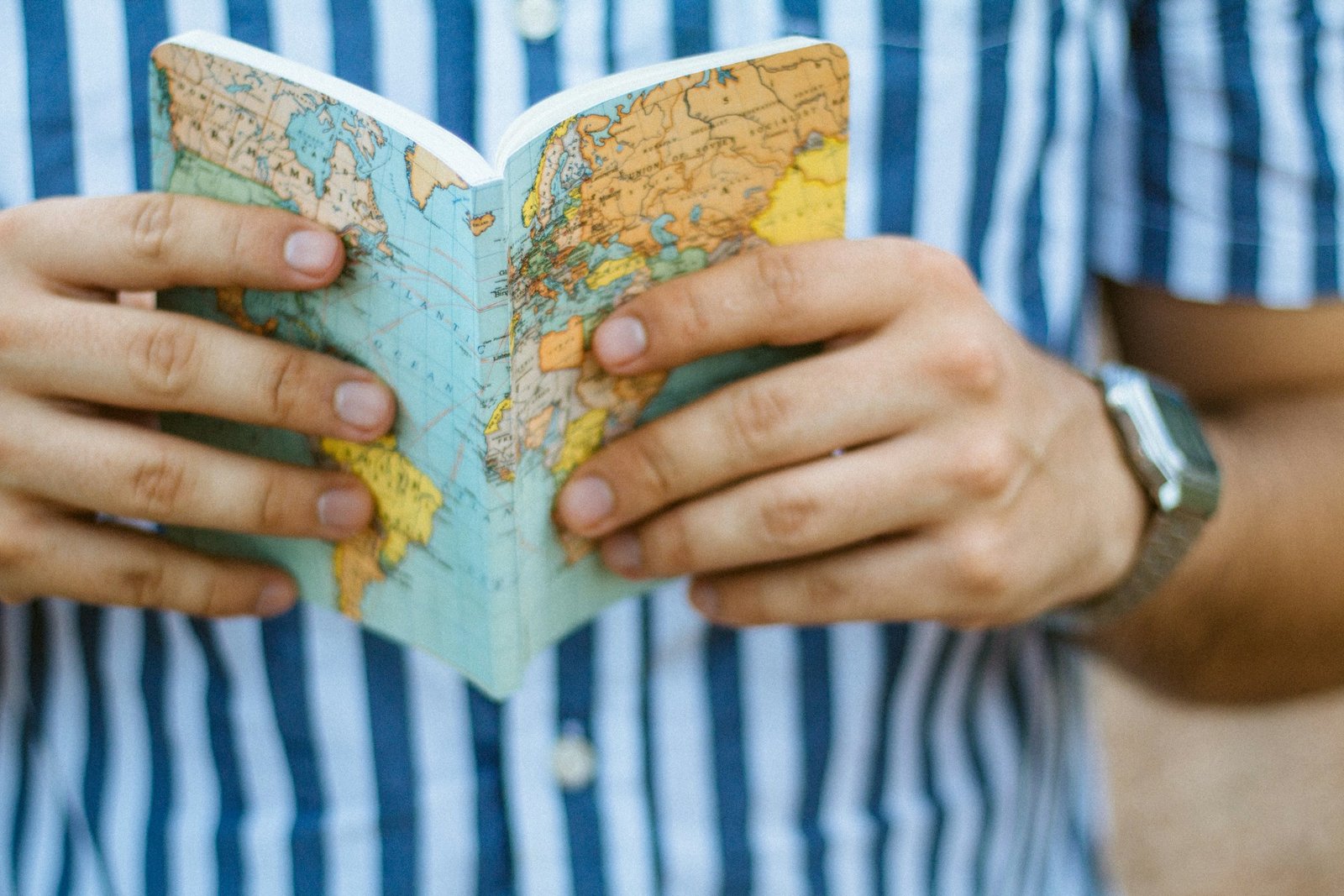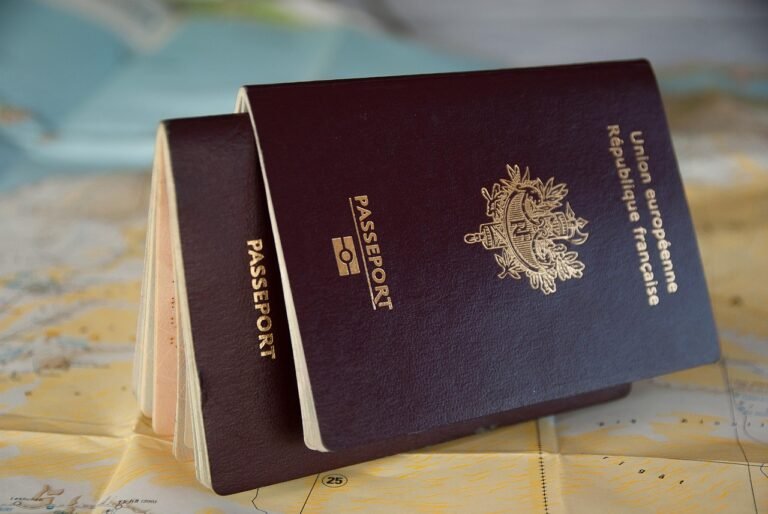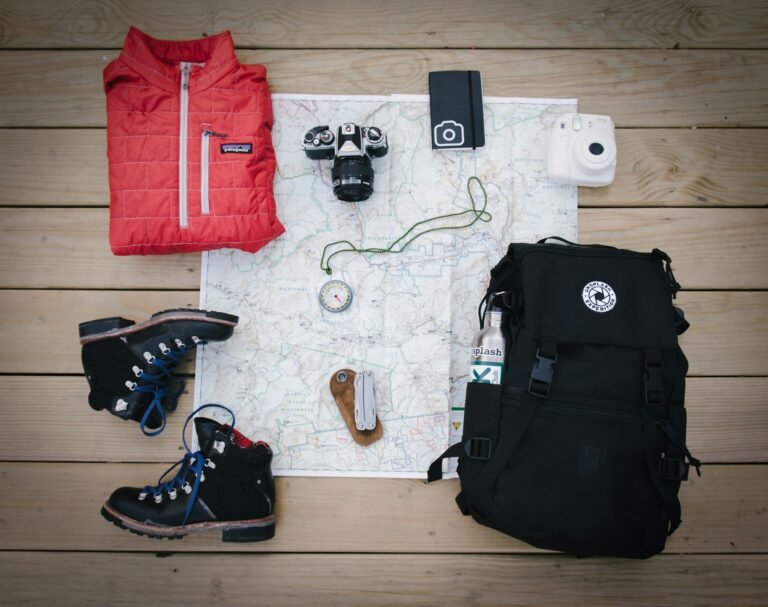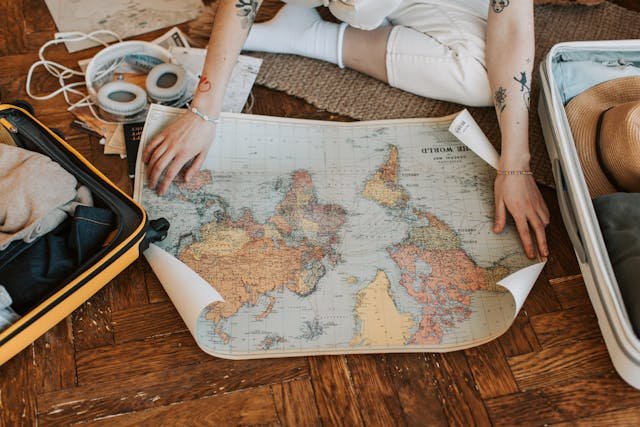
The “someday” trap is everywhere, and it’s particularly vicious when it comes to travel. You know the drill—scrolling through Instagram, bookmarking that Airbnb in Lisbon, telling yourself you’ll go “when you have more money” or “when work calms down.” Meanwhile, your savings account sits there like a lazy cat, barely growing, while flight prices do their usual unpredictable dance.
Here’s the thing though: waiting for the perfect financial moment is like waiting for traffic in Lagos to disappear. It’s not happening.
The uncomfortable truth? Most people overthink travel budgets to an almost paralyzing degree. They calculate every possible expense, add a 40% buffer, then decide they need to save for three more years. But what if—and hear me out—you could hack your way to that bucket list destination without waiting until you’re financially bulletproof?
The strategies that actually work aren’t the ones travel bloggers typically share (because they’re too busy selling you their affiliate links). They’re the slightly uncomfortable, creativity-requiring approaches that transform “impossible” trips into “let me check my calendar” reality. Sometimes the best travel hack is simply refusing to let perfect planning become the enemy of good experiences.
Ready to stop postponing and start packing?
The Real Problem Isn’t Money—It’s Mindset
Most people approach dream travel the same way they approach buying a mansion: as this massive, impossible financial mountain they’ll never climb. But here’s the thing—your bucket list trip to Japan doesn’t need to cost $8,000. Your African safari doesn’t require a second mortgage.
I learned this the hard way after spending two years “saving up” for a trip to Iceland that I kept pushing back because I thought I needed $5,000 sitting in my account. Turns out, I did that exact trip for $1,847, including flights from Chicago. The difference? I stopped waiting for perfection and started working with reality.
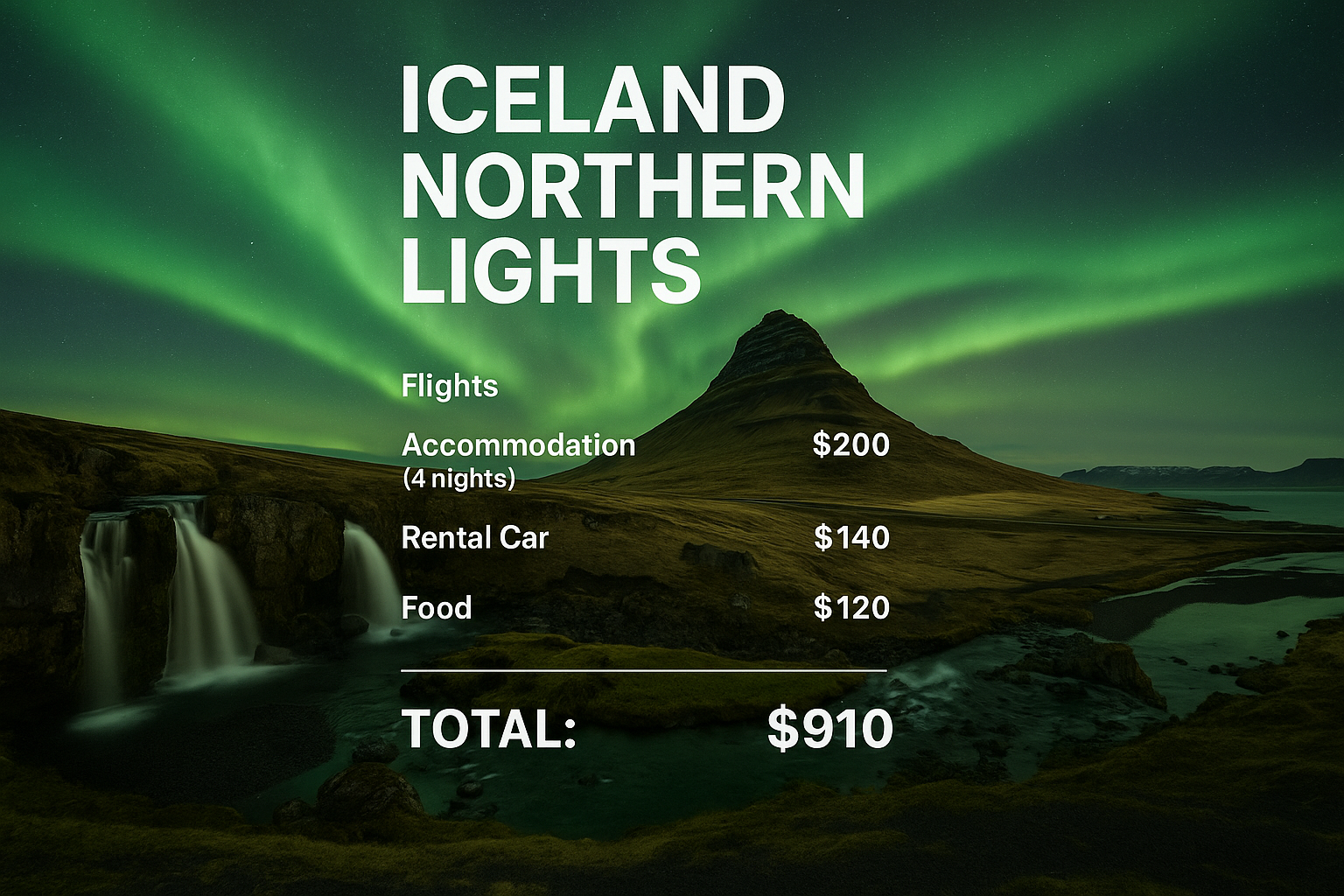
The 50-30-20 Rule for Dream Travel (But Smarter)
You’ve probably heard of the 50-30-20 budgeting rule, but let me introduce you to my modified version: the 50-25-20-5 travel edition. Instead of lumping all discretionary spending into one bucket, carve out 5% specifically for your bucket list fund.
If you make $50,000 a year, that’s $2,500 annually going straight to your travel dreams—or about $208 per month. Suddenly that “impossible” European adventure becomes very possible in 18 months instead of “someday.”
But here’s where it gets interesting: most people focus on the saving part and ignore the earning part. I started freelance writing two nights a week specifically to fund travel, adding an extra $800 monthly to my bucket list budget. That cut my timeline from 18 months to 8 months.
The Side Hustle Reality Check
Before you roll your eyes at “just get a side hustle,” hear me out. I’m not talking about becoming the next Uber millionaire or launching a drop-shipping empire. I’m talking about monetizing skills you already have:
- If you’re good with Excel, virtual assistant gigs pay $15-25/hour
- Dog walking in major cities averages $20-30 per walk
- Food delivery drivers make $15-22/hour during peak times
- Online tutoring starts at $18/hour
Even working just 6 hours a week at $20/hour adds $480 monthly to your travel fund. That’s an extra $5,760 annually—enough for multiple bucket list experiences.
Credit Card Points: The Game-Changer Nobody Talks About Properly
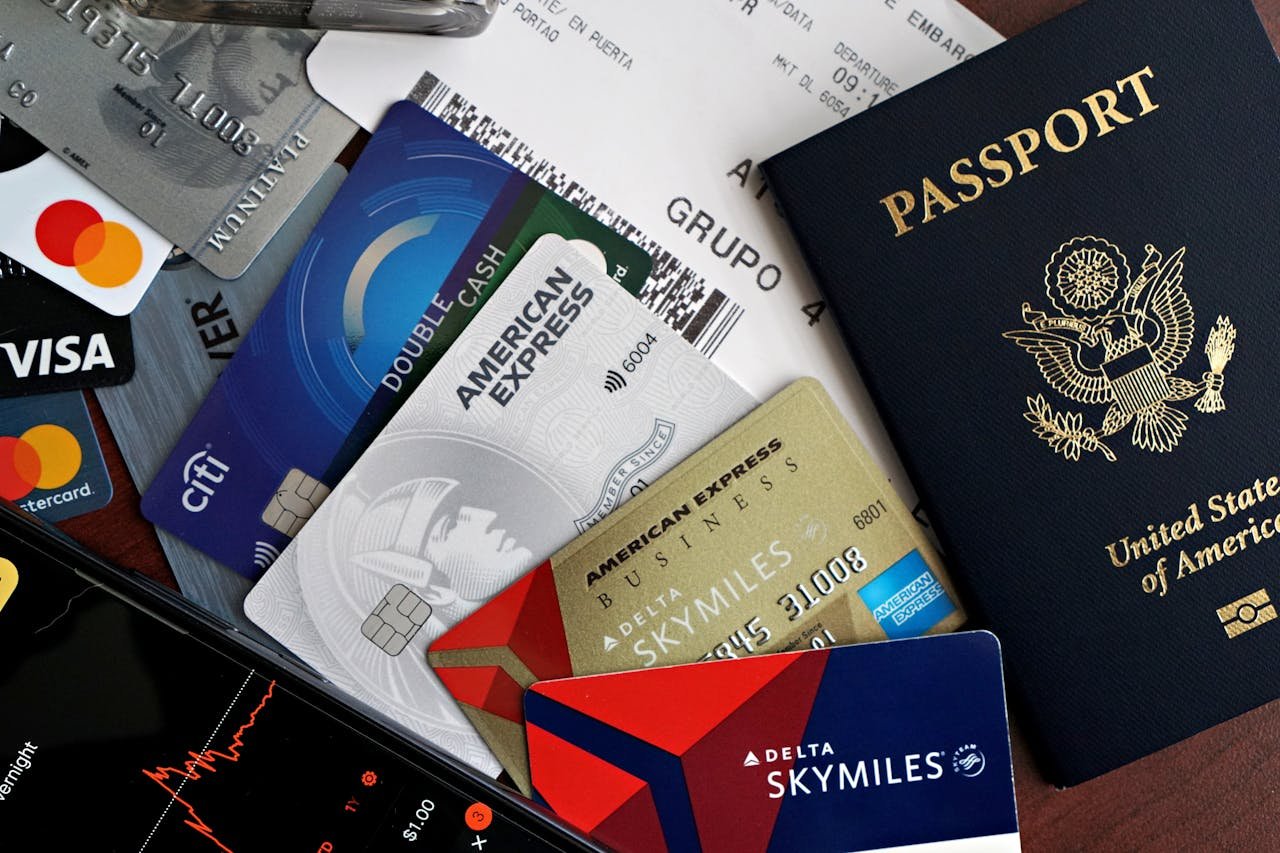
Let’s address the elephant in the room: travel hacking sounds scary, complicated, and slightly sketchy. I get it. But here’s what actually happens when you do it responsibly.
The real value isn’t in earning 2% back on everything you buy—it’s in those signup bonuses that can literally fund entire trips. When I got my first travel credit card, the welcome bonus alone covered round-trip flights to Costa Rica after spending $3,000 in three months (money I was already going to spend on groceries, gas, and bills).
The Smart Person’s Guide to Travel Credit Cards
Best for Beginners:
- Chase Sapphire Preferred: 60,000 point signup bonus (worth $600-900 in travel)
- Capital One Venture: 75,000 miles after spending $4,000 in 3 months
- Citi Premier: 80,000 points signup bonus
The Strategy That Actually Works:
- Choose ONE card that matches your spending habits
- Use it for everything you’d normally buy anyway
- Pay it off in full every month (seriously, this isn’t negotiable)
- Hit the minimum spending requirement naturally
- Book your trip with the bonus points
I’ve funded three major trips this way without spending a penny more than my normal monthly expenses. The key is treating the credit card like a debit card that happens to give you travel rewards.
Destination Hacking: Where Your Dollar Goes Furthest
Not all bucket list destinations are created equal. While everyone’s Instagram shows Santorini sunsets and Bali rice terraces, some of the world’s most incredible experiences happen in places where your dollar stretches like yoga pants.
The Exchange Rate Sweet Spots (2025 Edition)
Southeast Asia:
- Thailand: $30-40/day covers everything
- Vietnam: $25-35/day for mid-range comfort
- Cambodia: $20-30/day including temples and tours
Eastern Europe:
- Czech Republic: $40-60/day in Prague
- Poland: $35-50/day with amazing food scene
- Hungary: $30-45/day including thermal baths
Central America:
- Guatemala: $25-40/day including volcano hikes
- Nicaragua: $20-35/day with stunning beaches
- Mexico (outside tourist zones): $35-55/day
South Africa offers incredible value with luxury experiences at fraction of Western prices due to favorable exchange rates—think wine tastings in Stellenbosch and safari experiences that would cost triple elsewhere.
The 90-Day Money Sprint Method
Here’s my favorite technique for turning bucket list dreams into plane tickets: the 90-day money sprint. Instead of hoping to save money over months or years, you create an intensive 90-day period where every financial decision revolves around funding your trip.
Phase 1: The Audit (Days 1-7) Track every expense for one week. Not to judge yourself, but to find your hidden travel fund. That $4.50 daily latte? There’s $1,642 annually. The gym membership you use twice a month? That’s $720 yearly that could fund a week in Thailand.
Phase 2: The Purge (Days 8-30) Sell everything you haven’t used in six months. Old electronics, clothes that don’t fit, books you’ll never reread, kitchen gadgets gathering dust. I made $1,200 in three weeks doing this, and my apartment looked better too.
Phase 3: The Sprint (Days 31-90) This is where magic happens. Every discretionary purchase gets the “bucket list test”—will this meal out/shopping trip/subscription bring me more joy than my dream destination? Usually, the answer is no.
Real Numbers from Real People
Sarah from Portland used this method to fund a month in New Zealand:
- Sold unused items: $800
- Cancelled subscriptions: $180/month × 3 = $540
- Picked up weekend catering gigs: $300/weekend × 8 = $2,400
- Cooked at home instead of ordering out: $150/month × 3 = $450
- Total in 90 days: $4,190
Timing Is Everything: The Secret Travel Calendar
Airlines and hotels have predictable pricing patterns that most people never learn. Flying to Europe in June? You’re paying premium. Flying in March or November? Welcome to 40-60% savings.
The Sweet Spot Months by Region:
- Europe: April-May, September-October (avoid summer crowds and prices)
- Asia: November-March (dry season, fewer tourists)
- South America: April-June, September-November
- Africa: April-May, October-November (shoulder seasons)
Tuesday at 3 PM Rule: Airlines typically release sales on Monday nights, and other carriers match prices by Tuesday afternoon. I’ve saved hundreds by checking flights every Tuesday around 3 PM EST.
The 6-8 Week Window: Book domestic flights 6-8 weeks out, international flights 8-12 weeks out. Earlier than that, you’re paying the “early bird” premium. Later than that, you’re paying the “desperate traveler” tax.
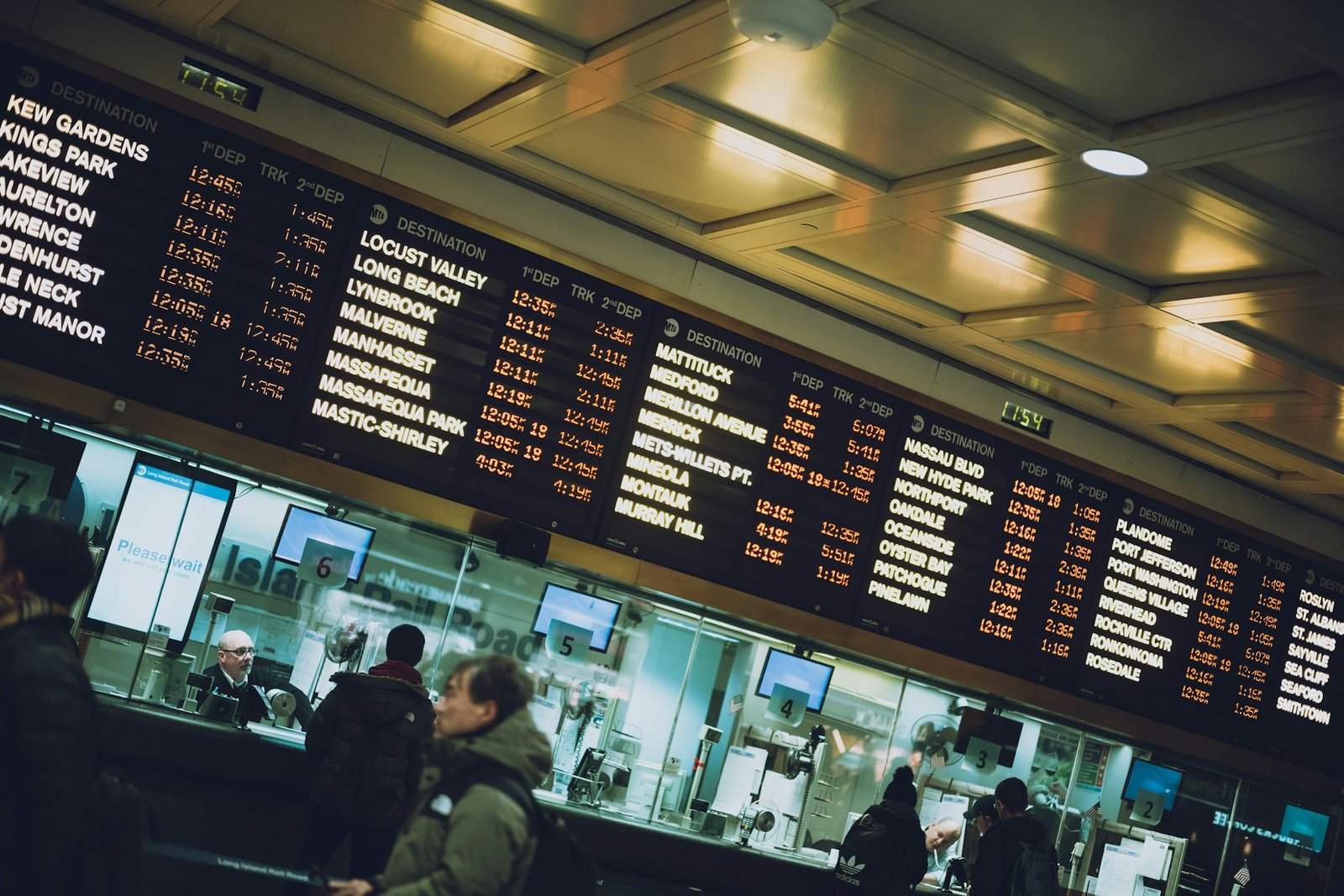
Accommodation Hacking Beyond Hostels
Forget what you think you know about budget travel accommodations. The game has changed dramatically, and you don’t need to sleep in dorm rooms or worry about bed bugs anymore.
House Sitting: Free accommodation in exchange for watching someone’s home and pets. TrustedHousesitters connects you with homeowners worldwide. I’ve stayed in a hillside villa in Tuscany, a beachfront condo in Australia, and a downtown loft in Prague—all for $0.
Work Exchanges: Workaway and WWOOF connect travelers with hosts who provide room and board in exchange for 4-6 hours of help daily. Think organic farms, hostels, tour companies, or English conversation practice.
Off-Season Luxury: That $400/night resort in the Maldives? It’s $120/night during monsoon season (which affects about 30% of days, not 100%). Research weather patterns and accept slight inconvenience for massive savings.
The Neighborhood Strategy
Stay in residential neighborhoods instead of tourist districts. You’ll get better food, lower prices, and actual cultural immersion. That $200/night hotel in Rome’s historic center has a $65/night equivalent 15 minutes away by metro.
Transportation Hacks That Actually Work
Budget Airlines Done Right: Spirit, Frontier, and Allegiant get bad reputations, but they’re perfectly fine if you follow the rules:
- Bring only a personal item (backpack that fits under the seat)
- Check in online exactly 24 hours early
- Expect no frills but safe, on-time transportation
Bus Networks Are Having a Moment: FlixBus covers 35 countries in Europe for as little as $5-15 between cities. In Asia, overnight buses with reclining seats cost less than budget hotels and get you closer to your destination.
Regional Airlines: Within regions, budget carriers offer incredible deals. AirAsia connects all of Southeast Asia, Ryanair covers Europe (if you can handle the rigid policies), and JetBlue has reasonable Caribbean routes.
The Multi-City Magic
Instead of flying home and back out for different trips, book multi-city itineraries. London-Bangkok-Tokyo-Los Angeles can cost less than separate round-trip tickets and lets you hit multiple bucket list destinations in one journey.
Food and Activities: Where to Splurge vs. Save
Save on:
- Street food and local markets (often tastier than restaurants)
- Free walking tours (tip-based, incredibly informative)
- City parks and hiking trails (nature doesn’t charge admission)
- Happy hours and lunch specials
- Public transportation day passes
Splurge on:
- One signature experience per destination (that cooking class in Thailand, the wine tour in Argentina)
- Quality gear that keeps you safe (good hiking boots, reliable luggage)
- Convenient flights over cheapest options (your sanity has value)
- Travel insurance (because medical emergencies abroad are expensive)
The Emergency Travel Fund Mindset
Here’s something most travel advice ignores: having a small emergency buffer actually makes budget travel less stressful and more enjoyable. I keep $300-500 extra beyond my planned budget for unexpected opportunities or minor emergencies.
This fund has paid for:
- A last-minute cooking class in Bangkok when the original was cancelled
- Upgraded train seats when the 14-hour journey felt too long
- An extra night in a city when weather delayed my flight
- Emergency laundry service after my backpack got soaked

Technology That Saves Money (Not Just Time)
Apps That Actually Matter:
- Skyscanner: Flight comparison across dates and airlines
- Rome2Rio: Shows all transportation options between any two places
- Trail Wallet: Daily expense tracking for staying on budget
- Maps.me: Offline maps that work without international data
- Google Translate: Offline translation prevents ordering expensive mistakes
The SIM Card Strategy: International phone plans can cost $10-15 per day per phone, adding hundreds to family trip costs. Instead, buy local SIM cards or use eSIM providers like Airalo for data-only plans starting at $3-15 per week.
Common Money Mistakes That Kill Dream Trips
Mistake #1: All-or-Nothing Thinking You don’t need three weeks and $10,000 to have a meaningful bucket list experience. I’ve had transformative long weekends in Montreal, life-changing five-day trips to Morocco, and unforgettable week-long adventures in Guatemala.
Mistake #2: Peak Season FOMO Everyone travels to Europe in July because that’s when Americans have vacation time. But Europe in October is warmer, less crowded, and 40% cheaper. Challenge your assumptions about “best” travel times.
Mistake #3: Gear Obsession You don’t need $200 hiking pants and a $400 camera to take an amazing trip. I’ve traveled with a $30 backpack from Target and taken incredible photos with my phone. Buy gear after you know what kind of traveler you are.
Mistake #4: Not Having a Money Date Set a specific date to book your trip, regardless of your account balance. Having a deadline forces creative problem-solving instead of indefinite postponement.
Making It Happen: Your 30-Day Action Plan
Week 1: Foundation
- Choose your destination and research realistic costs
- Apply for one travel credit card (if your credit allows)
- Set up automatic transfers to a dedicated travel savings account
- Download expense tracking app
Week 2: Income Boost
- List skills you could monetize
- Sign up for one gig work platform
- Sell items you don’t need
- Cancel unused subscriptions
Week 3: Cost Cutting
- Find cheaper alternatives for regular expenses
- Research travel dates and book within optimal windows
- Look into work exchanges or house-sitting opportunities
- Get travel insurance quotes
Week 4: Lock It In
- Book refundable accommodations (you can change later)
- Start following your destination’s social media accounts
- Connect with other travelers online
- Begin basic language learning if applicable
The Real ROI of Bucket List Travel
Let’s talk about something nobody mentions in travel advice: the actual return on investment of making these trips happen.
That $2,000 I spent in Iceland didn’t just buy me a week of pretty scenery. It gave me confidence that I could figure out complex logistics in a foreign country. It connected me with people I still talk to three years later. It provided stories that have opened doors in job interviews and social situations.
The skills you develop traveling—adaptability, problem-solving, cultural awareness, independence—are worth far more than their cost in today’s global economy.

Travel isn’t just consumption; it’s investment in yourself. And unlike most investments, the returns start immediately and compound for life.
Start Now, Not “One Day”
I’ll leave you with this: my grandmother’s shoebox of unused travel dreams taught me that “one day” is the biggest lie we tell ourselves. One day isn’t a plan—it’s hope dressed up as intention.
Your bucket list trip doesn’t require perfection. It doesn’t require wealth. It requires decision-making and resourcefulness, both of which you already have.
So stop researching endlessly and start booking imperfectly. Stop waiting for the right time and start creating it. Stop treating your dreams like luxuries and start treating them like necessities.
The world is waiting, and it’s more affordable than you think. All you have to do is take the first step.
Frequently Asked Questions
How much should I budget for my first bucket list trip? Start with $1,500-3,000 for a week-long international trip, including flights. This covers mid-range accommodations, local transportation, meals, and activities in most destinations outside Western Europe and Australia.
Is travel hacking safe and legal? Yes, when done responsibly. Travel rewards credit cards are legitimate financial products. The key is paying balances in full monthly and only spending what you normally would. Never manufacture spending or carry debt for rewards.
What’s the best way to save money on flights? Book 8-12 weeks in advance for international flights, be flexible with dates, and consider budget airlines for shorter routes. Tuesday afternoons often have the best deals as airlines match competitor prices.
Should I get travel insurance? Absolutely. Medical emergencies abroad can cost tens of thousands. Travel insurance typically costs 4-8% of your trip cost but can save you from bankruptcy if something goes wrong.
How do I avoid tourist traps while traveling? Stay in residential neighborhoods, eat where locals eat, use public transportation, and research free activities like hiking trails, parks, and cultural events. Ask your accommodation host for authentic recommendations.
What if I can’t get time off work for a long trip? Many bucket list experiences work perfectly for long weekends or week-long trips. Consider destinations within 6-8 hours flight time from your location, or plan around existing holidays to extend your time off.
Is solo travel safe for bucket list destinations? Solo travel can be very safe with proper research and precautions. Start with destinations known for solo-friendly travel like Japan, New Zealand, or Portugal. Stay in well-reviewed accommodations and trust your instincts.
How do I handle money and payments abroad? Notify your bank of travel dates, carry a backup card, use ATMs for local currency (better rates than currency exchange), and have small amounts of local cash for vendors who don’t accept cards.
What if my bucket list destination is expensive? Look for shoulder season dates, consider nearby alternative destinations, or break the trip into phases. Paris is expensive, but Prague offers similar European architecture at half the cost.
How far in advance should I start planning? Start planning 6-12 months ahead for major international trips. This gives time to save money, find deals, get necessary documents, and build excitement. However, don’t let short timelines stop you—I’ve planned amazing trips in just 2-3 weeks.
Top Products and Travel Recommendations
Travel Credit Cards:
- Chase Sapphire Preferred Card – Best overall travel rewards card with 60,000 point signup bonus and flexible point transfers to airline partners
- Capital One Venture Card – Simple 2x miles on all purchases with no foreign transaction fees
Booking Platforms:
- Skyscanner – Comprehensive flight comparison tool that searches entire months for best deals
- Booking.com – Wide accommodation selection with free cancellation options and loyalty program
- Rome2Rio – Shows all transportation options between destinations including buses, trains, and flights
Budget Accommodations:
- TrustedHousesitters – Free accommodation in exchange for pet/house sitting with verified reviews
- Workaway – Work exchange platform offering room and board for 4-6 hours daily help
Money Management:
- Trail Wallet – Simple daily expense tracking app designed specifically for travelers
- Wise – Multi-currency debit card with real exchange rates and low fees for international use
Travel Insurance:
- World Nomads – Flexible travel insurance that covers adventure activities and can be purchased after departure
- SafetyWing – Affordable monthly travel insurance perfect for longer trips or digital nomads
Transportation:
- FlixBus – Budget bus network covering 35+ countries in Europe with comfortable coaches and WiFi
- Airalo – eSIM data plans for international travel starting at $3-15 per week
- Tortuga Backpacks – Durable travel backpacks designed for carry-on compliance and urban travel
- Anker Portable Chargers – Reliable power banks that keep devices charged during long travel days
Language Learning:
- Duolingo – Free language learning app with offline capabilities for basic travel phrases
- Google Translate App – Offline translation and camera translation features for real-time communication
Budget Destinations:
- Thailand – Incredible value with $30-40/day covering comfortable accommodation, delicious food, and amazing experiences
- Guatemala – Central America gem offering volcano hikes, colonial cities, and Mayan ruins at $25-40/day
- Czech Republic – European architecture and culture in Prague for $40-60/day including beer and hearty meals
- Vietnam – Diverse landscapes from Ha Long Bay to Ho Chi Minh City with $25-35/day budgets
- Poland – Emerging European destination with incredible food scene and history for $35-50/day
Luxury for Less:
- South Africa – Safari experiences and wine regions at fraction of Western prices due to favorable exchange rates
- Portugal – European beaches and charm without the crowds or costs of Spain/France
- Malaysia – Modern cities, tropical islands, and incredible food with English widely spoken
Off-Season Gems:
- Iceland (November-March) – Northern Lights season with fewer crowds and lower accommodation costs
- Morocco (December-February) – Perfect weather while avoiding extreme summer heat and peak pricing
- Japan (January-February) – Avoid cherry blossom crowds while experiencing winter illuminations and hot springs

